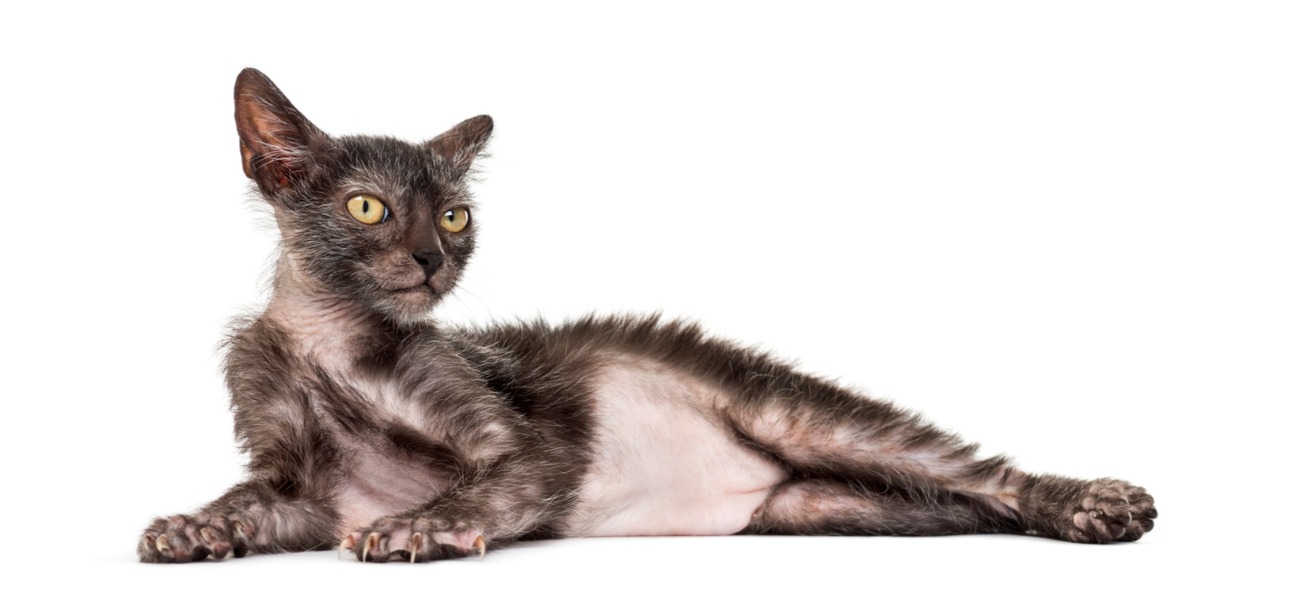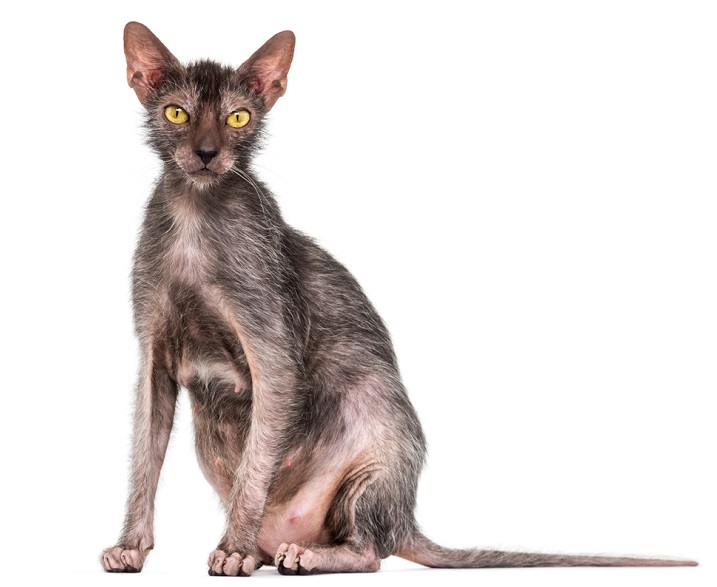The Lykoi Cat Breed- All About The Werewolf Cats

wow, the lykoi cat.
what is it? where he came from? why does it look like this?
These are questions that have been asked time and time again since the Lykoi began as a race. I hope to answer these questions and many more in the following story.
story
lykoi began their journey to becoming a breed in 2011. brittney gobble and i bred the first lykoi cat to the lykoi breeding program in the fall of 2011 to demonstrate that these cats were a single gene breed.
The foundation’s five cats were registered together that same year with the International Cat Association (TICA). since then, the work of multiple breeders, pet owners, and loyal fans has elevated the lykoi to near-rock star status.
breed development
 During their 5-year journey, there have been several accomplishments that the Lykoi have completed to make them different from other breeds of cats and unique in their journey.
During their 5-year journey, there have been several accomplishments that the Lykoi have completed to make them different from other breeds of cats and unique in their journey.
First, all of the basic lykoi used to start the breed come from stray colonies, shelters, or ferals. it is a natural mutation in the domestic cat that can appear from time to time.
the gene has turned up in all corners of the world and 17 of these natural mutations have been incorporated into the program.
This earned them the nickname “second chance breed” as they all started with rescue cats that might not have survived without our help, and many of which were dumped in shelters due to people not taking notice. realized how special they were.
p>
second, they have received grants to research their genetics, skin, and hair. there is a team of scientists (geneticists, dermatologists, etc.) that continues to collect data on lykoi to explain the interaction that the recessive gene has on their color, coat, and the hairless pattern they develop.
Third, they moved to Championship status in Tica in the fall of 2016. That means they can be shown in competitions with any other breed of cat, starting in May 2017.
that hurdle establishes them as a cat breed recognized by one of the major cat registries.
and fourth, with the help of many of the lykoi breeders, members of tica, our researchers, our genetic diversity with so many foundation cats, and our kitten owners, the lykoi have grown into a beautiful and very healthy breed that many people can enjoy.
appearance

People have called lykoi ugly, but many say they are absolutely beautiful. Lykoi carry a gene unique to the breed that causes not only the roan pattern (a mixture of normal colored hair with white hair), but also the bald pattern of the coat.
We’ve seen many cats that have features similar to lykoi, but we’ve found that cats must have both the partial coat appearance and the roan color pattern to be a lykoi.
The kittens are born with a normal coat and look just like any other normal kitten. they do not have baldness or roan coloration.
Then, after about a week or two, the kittens start to lose their fur and start to look fluffy. they can lose all their fur during this process.
Then, after a few weeks, the lykoi’s fur begins to grow. usually by three to four months of age, the kitten will have its full lykoi appearance.
This lykoi coat looks like it would feel stiff or bristly, but it’s actually very soft and silky. people are always surprised by the softness of the fur when they pet the cat.
The coat is not always stable. that means the cat could shed all its fur and then regrow a new one with more or less hair.
After this molt, the roans’ coloration can also change, making them appear more black to more white. there are certain lines that are more stable than others. this is why lykoi cats can look so different from each other.
Some can look more naked like a sphinx, while others can look almost completely covered. some have better masks and some have thicker coats. lykoi maintain some characteristics more consistently.
Ears and nose are always hairless, there are ruffs in the coat, and feet are lightly haired. these characteristics do not change regardless of the end of the molt.
The color of its fur can be any color that a normal cat can have. black is the standard, which is the color most people see and recognize as the werewolf cat. black roan is also the only color that can be displayed.
special care of the coat and shedding
 Even though the Lykoi are a special breed, they do not require different kinds of special care. Since they originate from the domestic cat, they are treated like a domestic cat. They can eat normal cat food, use the same litter and litter box, and stay in the same bedding as normal domestic cats.
Even though the Lykoi are a special breed, they do not require different kinds of special care. Since they originate from the domestic cat, they are treated like a domestic cat. They can eat normal cat food, use the same litter and litter box, and stay in the same bedding as normal domestic cats.
However, they do have some special requirements when it comes to washing. Due to their partially hairless coat, some lykoi accumulate oils on their nails and inside their ears.
Simply cleaning the nail with a cloth and regular cleaning of the ear when this happens is all that is needed. You also have to protect them from the cold and sunlight since they have more skin exposure than a normal cat. lykoi’s skin is known to tan in summer and the coat thickens in winter.
We have seen stray lykoi from feral colonies in many situations where they live outdoors in the winter with no problems and in the summer with no burns. lykoi cats also shed like normal cats.
They are not hypoallergenic and most people who are allergic to cats will have allergies to lykoi. A small number of people who have allergies claim that their lykoi cat does not cause problems with their allergies, but this is not enough to say that people who are allergic to cats can have one. Other than that, just loving a lykoi is what’s left for their care. most people think of them as normal werewolf looking cats.
behavior
 The behavior of the Lykoi is slightly different than other cats. Like other cats, they enjoy having people around, they love to be petted, and they love play interaction with people. They are not always a lap cat. They will sit with you for some time, but then they get curious about other things and get up to go exploring. We have seen Lykoi have guarding behavior over children and other cats.
The behavior of the Lykoi is slightly different than other cats. Like other cats, they enjoy having people around, they love to be petted, and they love play interaction with people. They are not always a lap cat. They will sit with you for some time, but then they get curious about other things and get up to go exploring. We have seen Lykoi have guarding behavior over children and other cats.
It is as if they felt like the kings of the home and it is their duty to watch over everything. we’ve seen lykoi play fetch, learn to use the toilet, stand on their hind legs, and use their front legs as hands to reach for things.
We even had one during play carrying an object in its paws while it waited on the ground on its hind legs. they are full of energy that seems to run out briefly only to start again. when there are several lykoi in a room, they tend to play and track as a pack.
We’ve had litters play when one smells something to investigate and each sibling decides to follow with their tails up and standing tall like a pack of wolves after a scent.
Their behavior is the reason many people have called them a more dog-like breed compared to many other cat breeds. but, in the end, they are still cats, and you will see much of their lives acting like house cats.
get a lykoi
 People see them, read about them, and then ask “How do I get one?”. Getting a Lykoi is not as hard as it used to be. People started wanting them when they first saw them in 2011.
People see them, read about them, and then ask “How do I get one?”. Getting a Lykoi is not as hard as it used to be. People started wanting them when they first saw them in 2011.
There were no kittens born that could be placed in pet homes. now most breeders will have kittens available for pet homes. it is still very limited.
there are fewer than 150 standard lykoi in the world, and that number includes both pets and breeding animals.
although it is a new breed, there is already advertising and fraudulent sale of cats that are not lykoi.
Some people will say they sell you a cat and then disappear as soon as they have your money. I would advise that anyone interested in owning a lykoi contact a breeder, talk to them and then decide if you want to get a lykoi.
I want to thank everyone who has supported the lykoi over the years, especially our loyal fans. without our fans, we would not have the positive support to bring this beautiful breed into the world.
about the author:

johnny gobble is a practicing veterinarian in vonore, tn usa for the past 21 years. He lives with his wife, Brittney, and his three children (Ali, Brooklyn, and Obadiah) in Sweetwater, TN USA.
They have been involved in cat breeding and cat breeding for almost ten years and have over 20 years of combined breeding experience. johnny is the co-founder, first breeder and main contributor to the lykoi breed.
He is the president of the tica race, as well as being in communication with the lykoi researchers. over 70% of the lykoi in the world are the direct result of the work that johnny and brittney have done.
official website: https://lykoikitten.com/